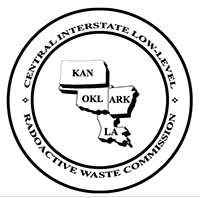The Nuclear Regulatory Commission is seeking public comment on a draft
regulatory basis for potential new regulations governing the
near-surface disposal of certain low-level radioactive waste.
The NRC classifies low-level radioactive waste based on its potential
hazards and has specified disposal and waste requirements for three
classes of waste with progressively higher concentrations of radioactive
material. Class A is the least hazardous and Class C the most hazardous.
However, a fourth type of low-level radioactive waste, called
“greater-than-Class-C,” contains radionuclides exceeding the
concentration limits for Class C. GTCC waste is typically activated
metals from power reactors, sealed sources, and waste material from
medical isotopes, but it may also contain special nuclear material such
as enriched uranium or plutonium.
Currently, there are no facilities licensed to dispose of GTCC waste, so
it is being stored at nuclear power plants or at interim storage sites.
The draft regulatory basis evaluates whether certain GTCC waste could be
safely disposed in a near-surface disposal facility. It also evaluates
whether regulatory changes would need to be considered to permit such
action, and whether the NRC or certain states should regulate such
disposal.
The draft regulatory basis is being made publicly available through the
NRC’s ADAMS online database under accession number ML19059A403 [1]. A
notice will be published shortly in the _Federal Register_, which will
initiate a 60-day public comment period. Comments may be submitted via
the federal government’s rulemaking website, www.regulations.gov [2],
using Docket ID NRC- 2017-0081.
The NRC will hold a public meeting Aug. 27 in Austin, Texas, to present
the draft regulatory basis and receive public comments. Details on that
meeting will be published at a later date.
